Збірник римівок з англійської мови

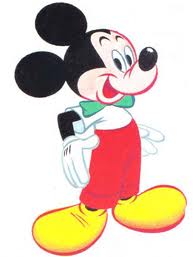
FOR CHILDREN AND TEACHERS
BY OLGA SHTOGUN
У збірнику подано римівки та вірші. Збірник призначається для учнів 2-5 класів, які вивчають англійську як основну, та 5-6 класів при вивченні англійської як другої іноземної. Може бути широко використаний для роботи в класі, позакласного читання та гурткової роботи.
Використання пісень, віршів та римівок на уроках англійської мови
Пісні, вірші та римівки є важливим мотивуючим засобом навчання в молодшій школі. Вивчаючи їх напам’ять, учні автоматично засвоюють лексичні одиниці, граматичні структури, ритм, наголос та вимову звуків, удосконалюють навички мовленнєвої діяльності.
Для того, щоб пісні та вірші сприяли досягненню навчальних цілей, вчитель має обрати шлях презентації їх, підібрати потрібну наочність, а також ретельно спланувати хід роботи.
Короткі вірші, римівки та пісні можуть бути використані для проведення фонетичних зарядок. Довгі сюжетні пісні можна розцінювати як тексти для читання чи аудіювання. Незалежно від цього робота над віршованим матеріалом розпочинається з активізації учнівської уваги, ознайомлення з новими лексико-граматичними одиницями та наданням завдання для першого прослуховування. Кінцевою метою, як правило, є вивчення пісні напам’ять. Значення використання пісень на уроках англійської мови:
- розвиток соціокультурної компетенції,
- пожвавлюють викладання, вносять різноманітність, викликають позитивні емоції та створюють високу мотивацію;
- багаторазового повторення та запам’ятовування лексичного та граматичного матеріалу.
- гарні приклади живої мови, гарну лексику, а також є неоцінимим джерелом тем для обговорення.
- стимулюють монологічне та діалогічне мовлення, сприяють розвитку як підготовленого, так і спонтанного мовлення.
Залежно від мети використання пісень їх можна розподілити на багато- та однофункціональні. Однофункціональні пісні використовують для того, щоб відпрацювати та закріпити лише одне мовне явище, наприклад, запам’ятати слова з теми (фрукти, овочі, одяг), форму часу, мовну структуру, що часто вживається.
Всі вправи, що використовуються під час роботи з піснею, можна розподілити на п’ять груп:
- лексичні;
- вправи, спрямовані на розвиток навичок аудіювання;
- вправи, що полегшують заучування;
- вправи для відпрацювання граматичного матеріалу;
- вправи для розвитку навичок говоріння та письма.
Добір пісенного матеріалу.
Добір пісенного матеріалу залежить від рівня мовленнєвої компетенції, віку та інших особливостей учнів. Окрім того, вони повинні відповідати певним вимогам:
- бути автентичними, доступними в інформаційному та мовному плані;
- яка мета використання цієї пісні (чи вписується певна пісня в план уроку);
- можливості навчального плану (чи є вільний час на уроці).
Таким чином при доборі пісенного матеріалу треба звертати увагу на зміст та форму пісні, тобто словниковий матеріал та граматичні структури. Крім того треба враховувати ритм та мелодію. Загальною метою уроку, на якому вивчається пісня, є ознайомлення з пісенною культурою англомовних дітей та вдосконалення мовленнєвої компетенції.
Етапи роботи з піснею чи віршем.
- Вибір пісні, відповідно до теми і вікових особливостей;
- Створення мотивації для вивчення пісні чи вірша.
- Опрацювання нової лексики та граматичного матеріалу, який може викликати труднощі при вивченні пісні чи вірша,
- Прослуховування вірша чи пісні.
- Читання хором за вчителем.
- Опрацювання по одному рядку.
- Читання вірша індивідуально.
- Заучування вірша напам’ять.
- Конкурс на кращого читця.
- Драматизація.
Англійські римівки є витвором народної творчості, соціального та історичного досвіду, мудрості народу, його яскравої та образної мови.
Цінність використання заримівок на уроці іноземної мови полягає в тому, що ритмічне та римоване слово легко піддається запам’ятовуванню, а доступний лексичний та граматичний матеріал дає можливість молодшим школярам розширити свої уявлення про особливості англійської поезії та поглибити знання про країну, мову якої вивчають.
Широке використання римівок дає можливість учням не тільки швидко сприймати та запам’ятовувати фонетичні зразки після багаторазового їх повторення, а й урізноманітнює навчальну діяльність учнів та стимулює засвоєння мовного матеріалу.
Обов’язковою вимогою до використання римівок на уроці в початковій школі є їх відповідність меті навчання та рівно психолого-вікових особливостей учнів.
Правильне використання римівок на уроці іноземної мови дає змогу вчителеві зробити механічну імітацію звуків творчим та цікавим видом роботи, а заучування їх напам’ять принесе задоволення молодшим школярам.
Види англійських римівок.
Для молодших школярів слід підбирати римівки прості за змістом, з чітким ритмом, короткі, з цікавою поетичною думкою та соціокультурним забарвленням.
Це можуть бути:
-жартівливі римівки-потігаки (limericks),
-лічилки (counting-out rhymes),
-римівки-загадки (puzzles),
-колискові римівки (lullabies),
-римівки- небилиці (jingles and wonders).
Поряд із використанням римівок на уроці іноземної мови в початковій школі доцільно широко застосовувати зображувальну та вербальну наочність, ігрову та рухливу діяльність учнів для того, щоб сприяти виробленню фонетичної компетенції молодшого школяра.
Використання римівок учителем дає можливість учневі точно відтворити почутий (з голосу вчителя або з аудіо запису) фонетичний зразок та, засвоївши інтонацію англійського речення в цілому, надалі вживати потрібну фонетичну одиницю та необхідну інтонацію в усному висловлюванні самостійно й правильно.
Римівки зручно застосовувати як для пояснення фонетичного явища, його аналізу, свідомого імітування, так і для сприяння розвитку фонематичного слуху та фонетичної компетенції учнів взагалі.
***
Good morning! Good morning!
Good morning to you!
Good morning! Good morning!
I’m glad to see you.
***
One, two
Green and blue
Up and down
Red and brown
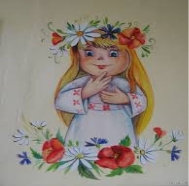
Football team
Let’s play, everyone.
Make a team and have some fun.
How many players want to play?
Sing the song with me and say.
One, two, three, four,
Five, six, seven.
Count with me till player “eleven”.
One, two, three, four,
Five, six, seven,
Eight, nine, ten, eleven.
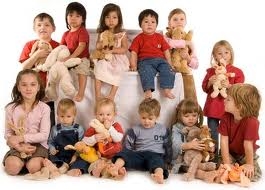
***
Mind the clock
And keep the rule.
Try to came
In time to school.
Early to bed,
Early to rise.
Makes a man healthy,
Wealthy and wise.
***
I am a girl.
My name is Jane.
I have a sister.
Her name is Ann.
***
I am a girl.
My name is Jane.
I have two sisters
Kate and Ann.
***
I am a girl.
My name is Ann.
I have a father.
His name is Dan.
***
I am a girl.
My name is Kate.
I have a brother.
He is eight.
***
I am a girl.
My name is Ann.
I have two brothers
Pete and Dan.
***
He is a boy.
His name is Pete.
He lives in Kyiv
In Gogol street.
***
Good bye, good bye,
Good bye my doll,
Good bye, good bye,
Good bye you all.

***
Good night father,
Good night mother,
Kiss your little son.
Good night sister,
Good night brother,
Good night everyone.
***
Spring is green.
Summer is bright.
Autumn is yellow.
Winter is white.
***
We like flowers that are bright.
We like flowers that are white.
We like flowers that are blue.
We like red and yellow flowers too.
***
Rain, rain,
Go away.
I and Tanya
Want to play.
***
Butterfly, butterfly
Where do you fly?
So far and so high
In the bright blue sky.

***
“Little mouse, little mouse,
Where is your house?”
“Little cat, little cat,
I have no flat.
I am a poor mouse
I have no house.”
“Little mouse, little mouse,
Come to my house.”
“Little cat, little cat,
I cannot do that. You will eat me.”
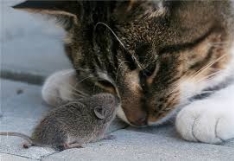
***
I like to read.
I like to play.
I like to study every day.
***
Humpty-Dumpty sat on the wall.
Humpty-Dumpty had a great fall.
All the king’s horses and all the king’s men
Could not put Humpty-Dumpty together again.
***
Jack be nimble.
Jack be quick.
Jack jump over candle stick.
***
Red and orange,
Green and blue.
Nice and tasty
Eggs for you.
***
Yellow chicks
And Easter Bunny,
Look at them!
They are so funny!
***
The cow eats grass.
And the grass is green
But the milk of the cow is white.
If the grass was white
Would the milk be green?
I must ask my dad tonight.
***
Our pussy cat has a nice big flat.
It has no door, but a brown floor.
The walls are white,
All the flat is bright.
***
Pussy cat, pussy cat
Where have you been?
I’ve been to London
To look at the queen.
Pussy cat, pussy cat,
What did you do there?
I frightened a little mouse under the chair. 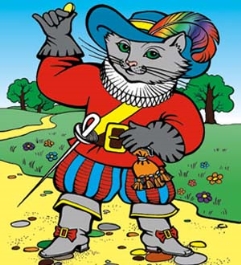
***
My doggy is funny.
My doggy is small.
It likes to run
And play with the ball. 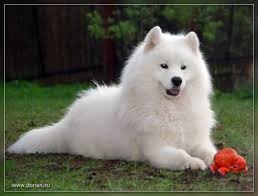
***
I have a little kitten
And her coat is grey.
She lives in my house
And she never runs away.
***
Lions and tigers are in the Zoo
Bears and elephants, zebras too.
Count the monkey two by two.
All the animals are in the Zoo.
***
Harry has a little dog
Such a funny fellow.
But his dog is made of wood
Painted white and yellow.
***
I am a parrot.
My name is Fly.
I can say
“Good morning “ and “Good bye!”
***
Quack-quack, chock-chock!
How do you do, Mr. Cock?
When you sing “Cock-a-doodle-do!”
I always hear “How do you do?” 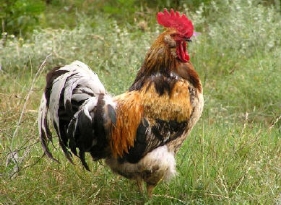
***
I have got a drum.
I have got a dog.
I have a teddy-bear.
I have got a frog.
***
Why do you cry Willy?
Why do you cry?
Why Willy, why Willy,
Why Willy, why?
***
I’ve got ten little fingers.
I’ve got ten little toes.
I’ve got ten little ears
And just one little nose.
***
My pretty doll
Is very small.
I like my pretty little doll.
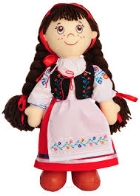
***
I love my cat
It’s warm and fat.
My cat is grey.
I like to play.
***
My doll is so pretty.
Her eyes are so blue.
Her cheeks are so rosy.
Her dress is so new.
***
Maybe rain,
Maybe snow.
Maybe “yes”,
Maybe “no”.
***
Roses are red.
Violets are blue.
Sugar is sweet
And birds are too.
***
My dear, dear Mummy!
Let me kiss your face.
I want you to be happy
Today and always!
I love my family
Grandmother and grandfather,
My father and your father,
My mother and your mother,
My sister and your brother.
I love my father Ben.
I love my uncle Dan.
I love my granny Emily.
I love my dear family!
Look at me
I’m a horse! I’m a horse!
And I can jump, of course!
Look at me! Look at me!
I’m a cat! I’m a cat!
And I can climb like that!
Look at me! Look at me!
I’m a fish! I’m a fish!
And I can swim, splish splish!
Look at me! Look at me!
I’m a chimp! I’m a chimp!
And I can climb and swing!
Look at me! Look at me!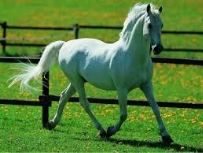
***
Breakfast in the morning,
Dinner in the day.
Tea comes after dinner,
Then it’s time to play.
Supper in the evening,
When the sky is red.
Then the day is over
And we go to bed.
***
What’s for lunch?
Here is a cake and an apple to crunch.
An apple for me and apple for you
A banana, a cake and an orange too.
***
I’m Sten MacCan, I am a businessman.
Good morning, Sten! Good morning!
I’m Sten MacCan, I am a fireman.
Good afternoon, Sten! Good afternoon!
I’m Sten MacCan, I am a spaceman.
Good evening, Sten! Good evening!
***
My eyes can see,
My ears can hear,
My nose can smell,
My mouth can talk,
My head can nod,
My arms can hold,
My legs can walk, and walk, and walk.
ABC
A is for an apple;
B is for book;
C is for a cat;
D is for a dog;
E is for an egg;
F is for a flower;
G is for a goose;
H is a horse;
I is for an ink;
J is or a for a jam;
K is for a kangaroo;
L is for a lion;
M is for a mouse;
N is for a nut;
O is for an onion;
P is for a pig;
Q is for a quill;
R is for a rabbit;
S is for a squirrel;
T is for turtle;
U is for an umbrella;
V is for a vegetable;
W is for a wasp;
X is for a xylophone;
Y is for a yard;
Z is for a zebra.
January
January opens
The box of the year
And brings out days
That are bright and clear.
And brings out days
That are cold and gray,
And shots, “ Come see
What I brought today!”
Spring
The sunshine gleams so bright and warm,
The sky is blue and clear.
I run outdoors without a coat,
And spring is almost here.
April
April is a rainbow month
Of sudden springtime showers.
Bright with golden daffodils
And lots of pretty flowers.
May
The grass is green.
Flower blossoms I have seen.
The days era warm.
By evening it cools.
It’s time to find the garden tools.
Winds of March
Winds of march, we welcome you,
There is work for you to do.
Work and play and blow all day,
Blow the winter cold away.
September
September means its time again
For going off to school.
The days are getting shorter
And the nights are getting cool.
October
October’s the month
When the smallest breeze
Gives us a shower
Of autumn leaves.
Bonfires and pumpkins,
Leaves sailing down –
October is red
And golden and brown.
November
No sunshine, lots of rain,
No warm days, snow again!
No bugs or bees
No leaves on trees.
You must remember
This is November!
Seasons
In spring the trees are green,
In autumn they are red and brown.
In summer the sun is bright,
In winter the snow is white.
But I can play and I can sing
In summer, and winter, in autumn, and spring.
Clouds
What’s fluffy, white, and floats up high,
Like piles of ice-cream in the sky?
And when the wind blows hard and strong,
What brings the rain?
What brings the snow?
That showers down on us below?
Список використаної літератури:
1.Англійська мова в початковій школі //2013р.
2.Морська Л. І. Англійська мова 7 клас /Л. І. Морська. – К.ІРПІНЬ. - 2007, - 238с.
3.Сірик Т. Л. Англійська мова 6 клас /Т. Л. Сірик. – Полтава. - 2006, - 214с.
1


про публікацію авторської розробки
Додати розробку
